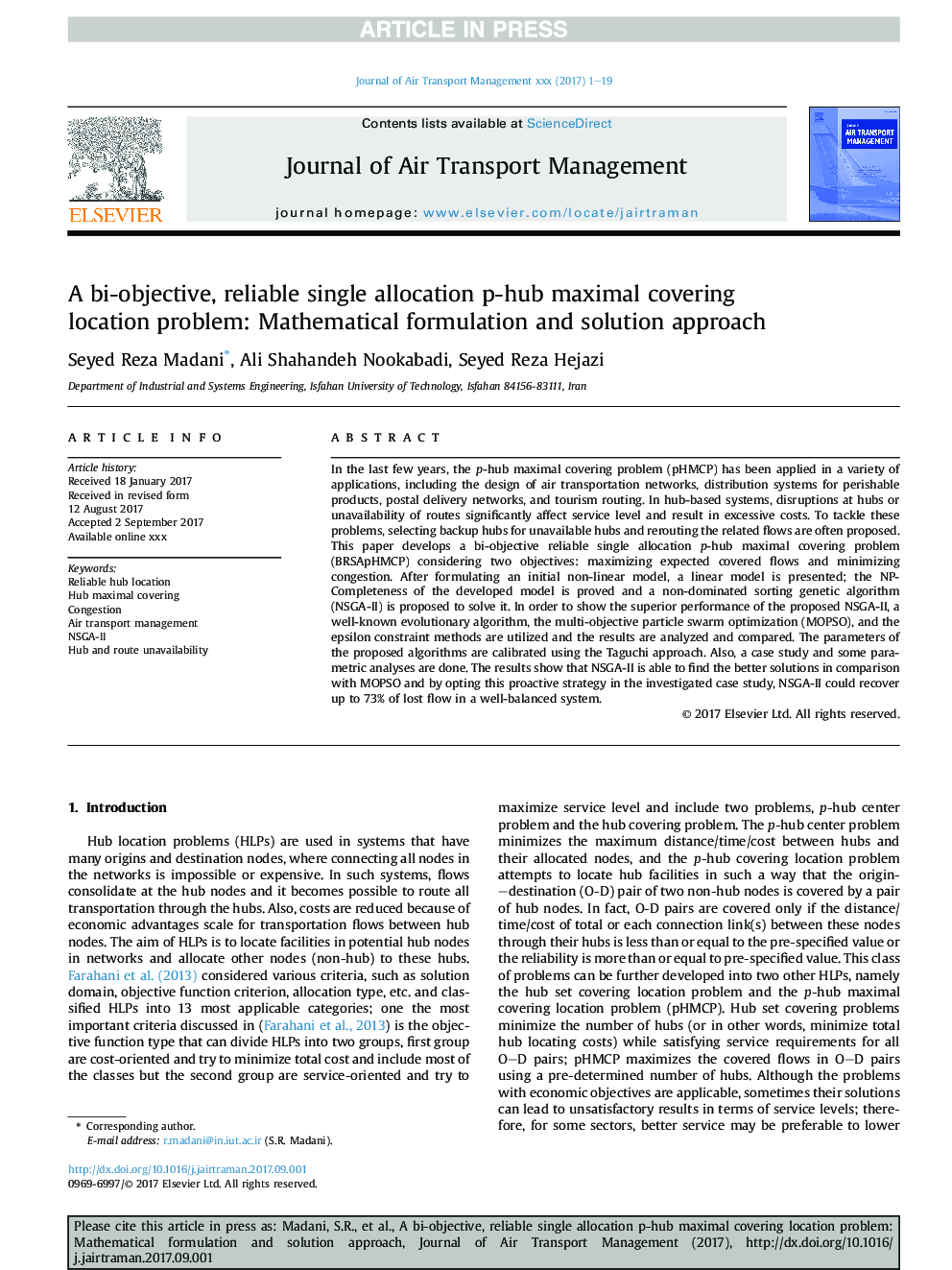| Article ID | Journal | Published Year | Pages | File Type |
|---|---|---|---|---|
| 7435198 | Journal of Air Transport Management | 2018 | 19 Pages |
Abstract
In the last few years, the p-hub maximal covering problem (pHMCP) has been applied in a variety of applications, including the design of air transportation networks, distribution systems for perishable products, postal delivery networks, and tourism routing. In hub-based systems, disruptions at hubs or unavailability of routes significantly affect service level and result in excessive costs. To tackle these problems, selecting backup hubs for unavailable hubs and rerouting the related flows are often proposed. This paper develops a bi-objective reliable single allocation p-hub maximal covering problem (BRSApHMCP) considering two objectives: maximizing expected covered flows and minimizing congestion. After formulating an initial non-linear model, a linear model is presented; the NP-Completeness of the developed model is proved and a non-dominated sorting genetic algorithm (NSGA-II) is proposed to solve it. In order to show the superior performance of the proposed NSGA-II, a well-known evolutionary algorithm, the multi-objective particle swarm optimization (MOPSO), and the epsilon constraint methods are utilized and the results are analyzed and compared. The parameters of the proposed algorithms are calibrated using the Taguchi approach. Also, a case study and some parametric analyses are done. The results show that NSGA-II is able to find the better solutions in comparison with MOPSO and by opting this proactive strategy in the investigated case study, NSGA-II could recover up to 73% of lost flow in a well-balanced system.
Keywords
Related Topics
Social Sciences and Humanities
Business, Management and Accounting
Strategy and Management
Authors
Seyed Reza Madani, Ali Shahandeh Nookabadi, Seyed Reza Hejazi,
